
|
We all know of animals with jobs. There are guard dogs, carriage horses, plowing oxen. However, there are more unusual animals that have attained some very peculiar jobs. Come see how we harness these animals’ special abilities and use them to help make the world a better place. So come and meet 13 animals that know how to go through a decent day's work. |
|
1.Narwhals help scientists measure ocean temperatures In 2006, scientists from Greenland and the U.S. tagged 14 narwhals with satellite tags and followed their movements, measuring the ocean temperatures where they travelled. Narwhals prefer water temperature to be around 40F (4C) and can dive to depths of up to a mile, providing the researchers with data they might otherwise have difficulty obtaining. |
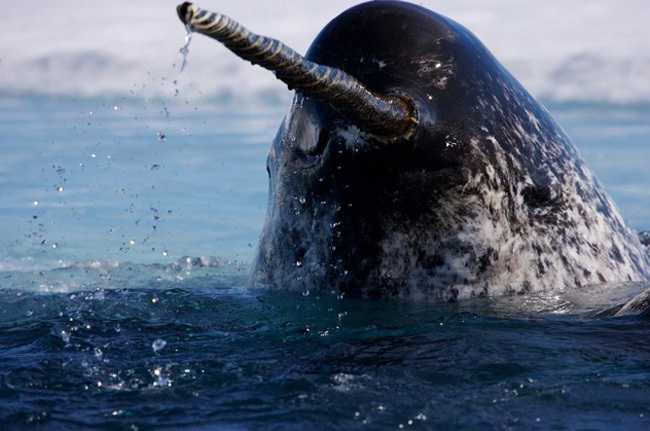 |
| worldstuff.net |
|
Along the eastern coast of the U.S., oyster beds have and are being planted. The reason is the oyster’s amazing ability to filter out certain pollutants from the water. Scientists indicate a noticeable improvement in the levels of pollution along the New York coast and in other parts as well. Sadly, these oysters are not edible, as some of the toxins they filter remain in their bodies. |
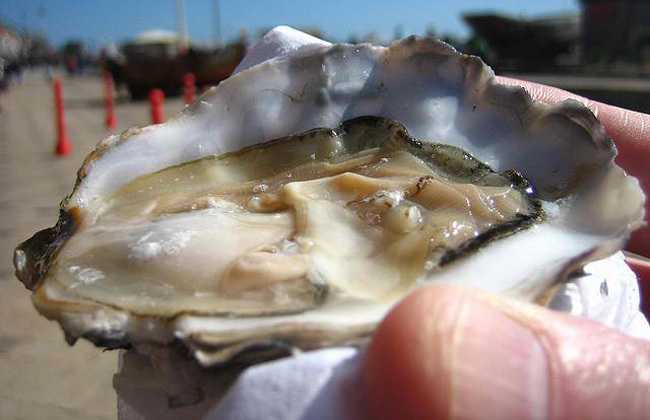 |
| buzznet.com |
|
Many people suffer from various degrees of aversion to spiders, and it’s quite understandable; spiders bite, their venom can be extremely painful and, in rare cases, even fatal. This is also the case with the Brazilian Wandering Spider’s bite, but with one salient difference: the spider’s bite also causes an involuntary erection in males. Researchers are now studying the toxin that produces these results in the hopes of finding a better alternative to Viagra. |
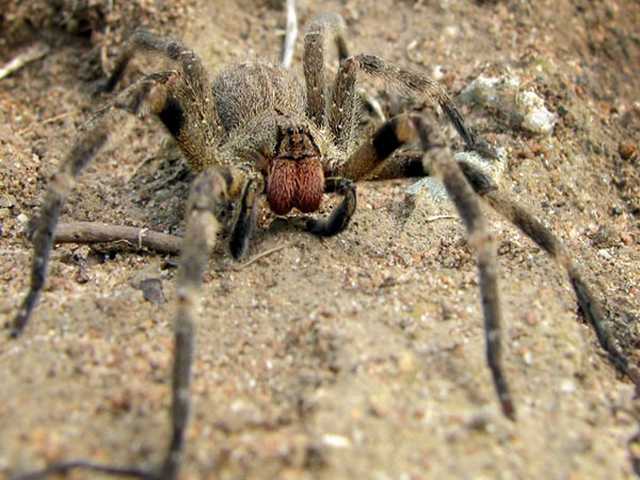 |
| wikimedia.org |
|
4. A pet raven trained to save lost hikers Ravens are notoriously intelligent birds. This is why Emily Cory decided to train her pet raven to locate lost hikers in the state of Arizona. A graduate of animal behavioral science, Emily decided to turn her college education to good use by training Shade the raven to play hide-and-seek while teaching him verbal commands. She eventually plans on teaching him to assist in the location of missing or lost hikers. |
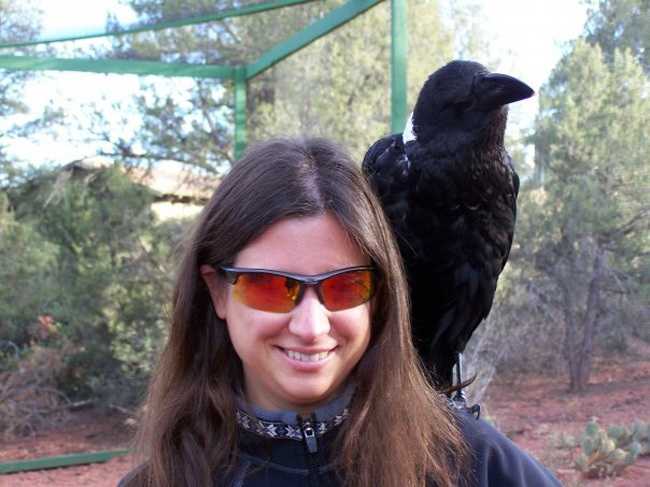 |
|
In 2010, there were 10 registered “therapy llamas” in the U.S. – These furry herbivores seem to be beneficial to people in nursing homes and hospitals, providing residents with love and attention one might not expect. See our post about the therapy llama! |
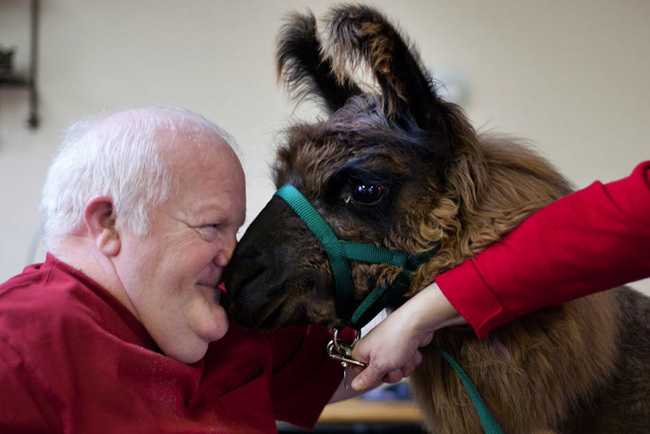 |
| newsmax.com |
|
6. Elephant cinematographers During the filming of the documentary “Tiger – Spy in the Jungle”, the BBC used trained elephants to carry cameras around or place them in strategic locations in order to capture tigers on film. Tigers are known to shy away from humans, and avoiding human presence seemed to help them lose their shyness and be caught on film. I did hear, however, that the elephants were earning peanuts... |
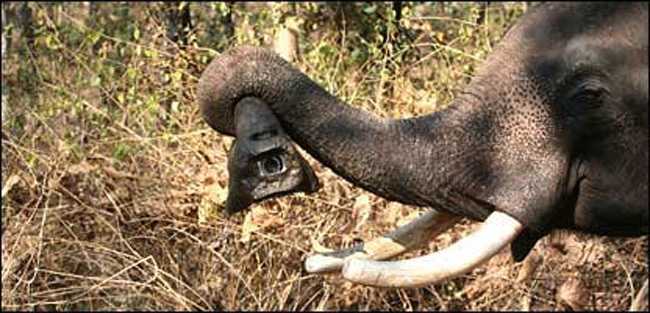 |
| americandigest.org |
|
In various places around Africa, dogs are being trained to sniff out contrabands being smuggled by animal poachers (like ivory) to help catch these ruthless killers. Others are trained to sniff out spent bullet casings, track them and even attack the poachers in extreme cases. |
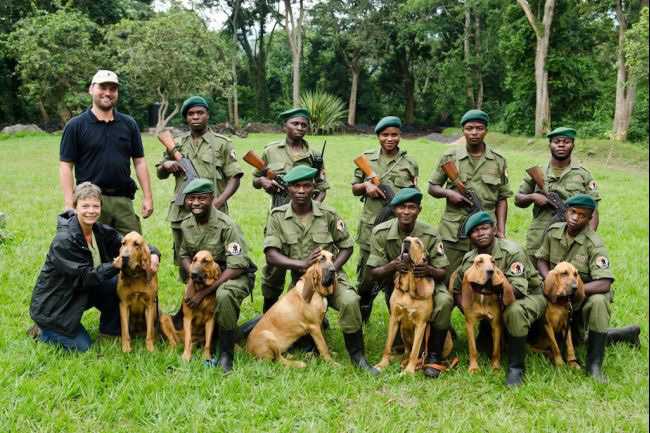 |
| slate.com |
|
The U.S. Navy has been training dolphins and sea lions to patrol the coast, and identify and tag (even trap) divers. Other dolphins were trained to detect explosives and mines, then tag them for the navy to locate. |
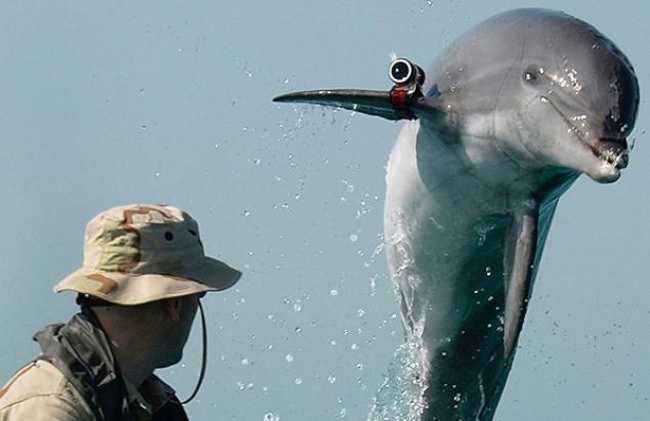 |
| globalanimal.org |
|
A professor in West Virginia University has managed to train moths to sniff out chemicals used for bomb-making. This was done by mixing the chemicals with the moths’ food. While effective, the U.S. Department of Defense decided that dogs are more effective. |
 |
| avonfire.gov.uk |
|
If moths weren’t enough, it seems that a Croatian researchers trained bees to find landmines by mixing TNT with sugar and feeding it to the bees. When released in the wild after training, the bees would converge on certain areas on the ground, indicating that there is probably a landmine there. Bees were chosen because, while rats and dogs can also be used, their weight might trigger the landmines, and the bee’s light weight makes them ideal for the job. |
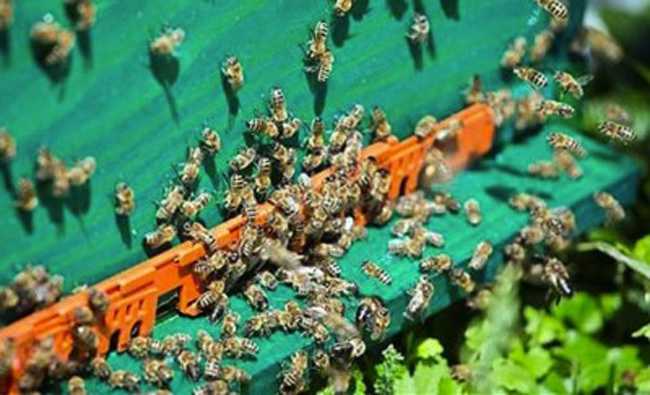 |
| nocookie.net |
|
A family in Thailand that owns an expensive collection of antiques hasn’t had a burglary attempt in 15 years. This is because 15 years ago, this family started keeping their 2 crocodiles as pets/guards. Thong and Nguen (the crocodiles) have different roles: Thong patrols the yard, while the more aggressive Nguen hides and waits in a pit behind the house. |
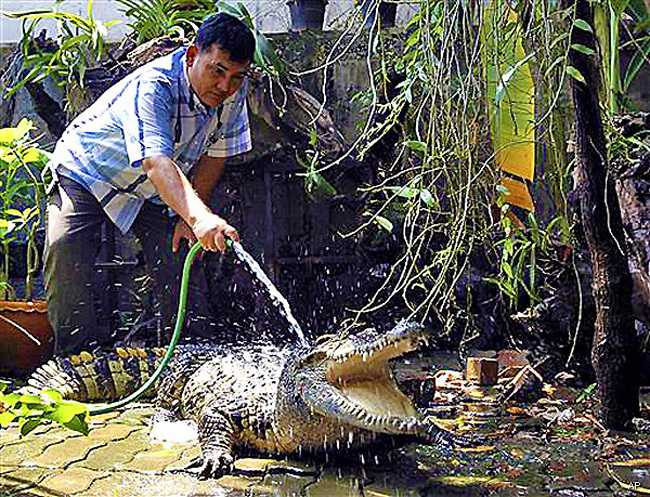 |
|
Meet Dominic the pig (nicknamed “Fireman Ham”). Dominic’s job is to train English firemen in handling animals in a fire situation. Dominic does this by running away from, or charging at the trainees, teaching them a valuable lesson in the unexpected behavior of animals, as well as methods of capturing them when they're scared. |
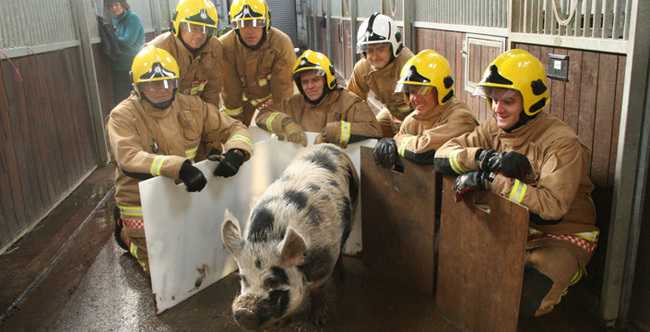 |
| globalpost.com |
|
Ferrets are some of the smartest animals on the planet, making them very trainable. Their small size is also very useful, as they can be used to access areas humans cannot. British Telephone used them to run cables, Boing used them to lay down wires, and Fermilab had a ferret that would clean an accelerator’s pipes! |
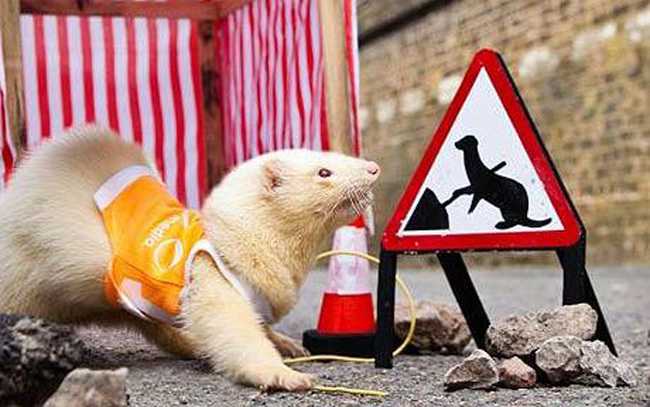 |
| telegraph.co.uk |
|
cover photo: instagram.com |